Journey to the Top
—From Taiwan’s Starting Point to its Highest Peak
Esther Tseng / photos Kent Chuang / tr. by Phil Newell
January 2025
00:00

Fort Zeelandia (a.k.a. Anping Old Fort) is seen as the starting point of Taiwan’s modern history.
Geopolitical developments of recent years have put Taiwan in the global spotlight. Many international travelers who have previously visited the famous tourist attractions of Taipei want to come back and explore Southern Taiwan (especially Tainan and Chiayi), to better understand our island’s history, culture, and people.
In this article, we offer readers a travel itinerary on the theme of “From Taiwan’s Starting Point to its Highest Peak.” We hope it will be a useful guide for visitors who enjoy hiking in mountain forests or casually exploring urban areas.
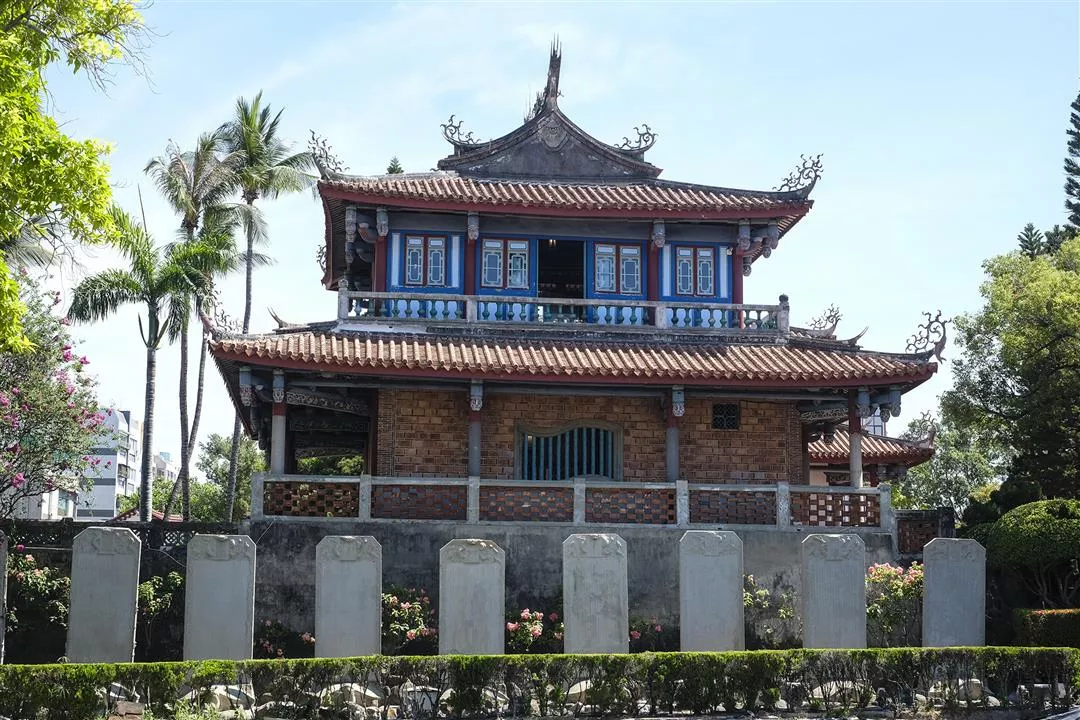
In the Qing Dynasty, people could watch the sun setting over the ocean from Fort Provintia (Chikan Tower), but today they go to the Sunset Platform in Tainan’s Anping District to view it.
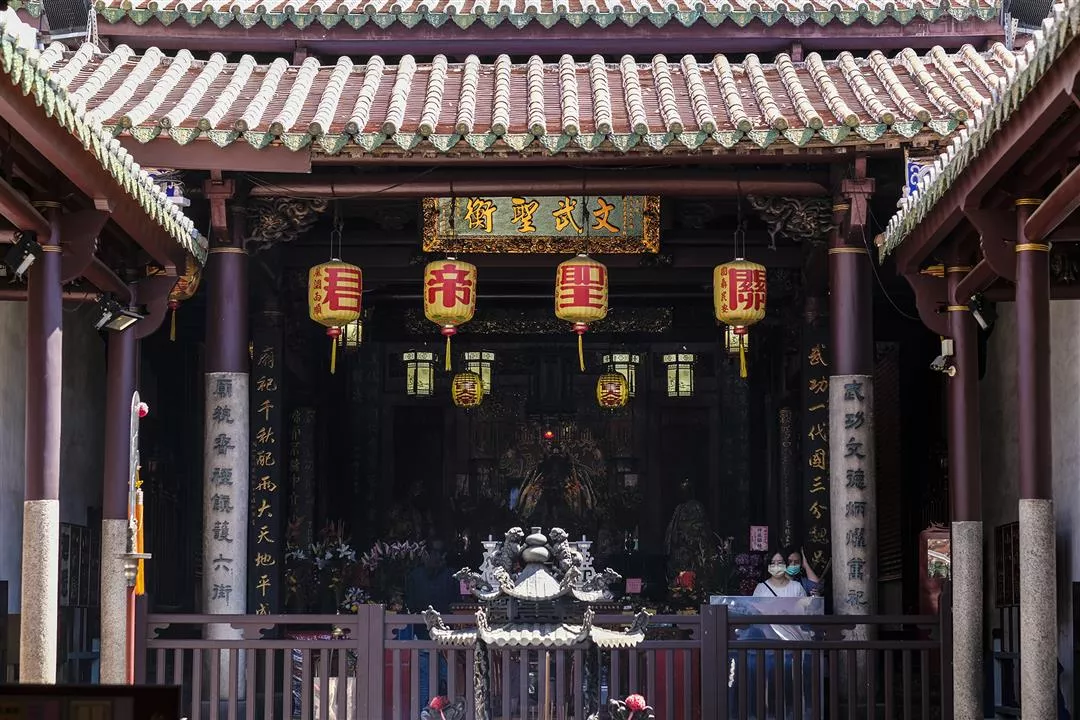
The Sacrificial Rites Martial Temple has not changed in location or appearance for hundreds of years.
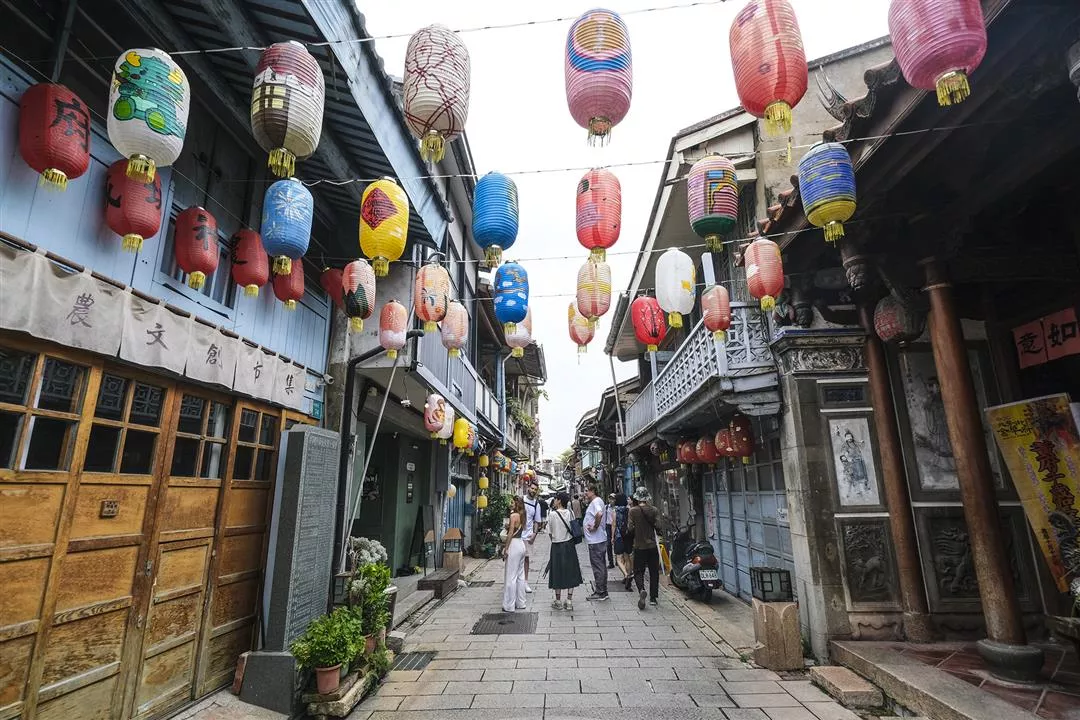
Tainan’s Shennong Street preserves the appearance of traditional urban streets in Taiwan. With its specialty shops, temples, and traditional businesses, it offers travelers a sense of adventure.
The starting point of Taiwan’s history
In 1624, the Dutch arrived in the Anping area of Tainan, marking Taiwan’s entrée onto the world stage. Tainan served as the administrative center of the island during the 17th-century period of Dutch rule and under the Ming loyalist general Zheng Chenggong (Koxinga), who expelled the Dutch. It can be seen as the starting point of Taiwan’s modern history.
For their first stop we suggest that travelers take the high-speed rail from Taoyuan International Airport directly to Tainan, and visit the oldest walled fortress in Taiwan: Fort Zeelandia, also known as Anping Old Fort. This old citadel was in a real sense the launch pad of modern Taiwan.
Lu Song-ying, a staffer at the Tainan City Cultural Affairs Bureau, says that 1624 was the first time that Taiwan became involved in international geopolitical affairs. As a node in the colonial trading empire of the Dutch East India Company, it served as a layover and entrepôt for journeys to both Japan and mainland China. Today, 400 years later, Taiwan’s importance has only increased. The reason is “location, location, location,” and it will continue to be important far into the future.
The second stop on our suggested itinerary is Fort Provintia, today known as Chikan Tower, which was first built by the Dutch in 1653.
Lu Song-ying likens Chikan Tower and the many other heritage sites in Tainan to a layer cake of Taiwan history. After walking through the old streets, one can ascend the tower for a “God’s-eye view” of the surrounding area. During the Qing Dynasty, one could gaze out from the tower at the sun setting over the ocean, or play on the beach of the former lagoon, which has since disappeared due to siltation. Today, visitors can discover the remnants of the original Dutch structure, see tablets with inscriptions from the Zheng Chenggong and Qing-Dynasty eras, and view the 19th-century structures built on top of the Dutch foundations. Also part of the layer cake are historic sites such as the Grand Mazu Temple and the Sacrificial Rites Martial Temple, which have not changed in location or appearance for several hundred years.
Next travelers can head to Yongle Market and Shuixian Gong Market to experience the lifestyles of ordinary modern Taiwanese. In and around these markets one will find places to do routine shopping, abundant eateries, and venues for religious worship, so that they offer an adventurous atmosphere. One can try an alternative Taiwanese-style hamburger—pork-tongue guabao—and smell the fragrance of eel being stir-fried over an open flame.

Austrian photographer Adrian Ivad (left) enjoyed the taste of pork-tongue guabao (a Taiwanese-style hamburger), but said he would have preferred not to have been told it was pork tongue.
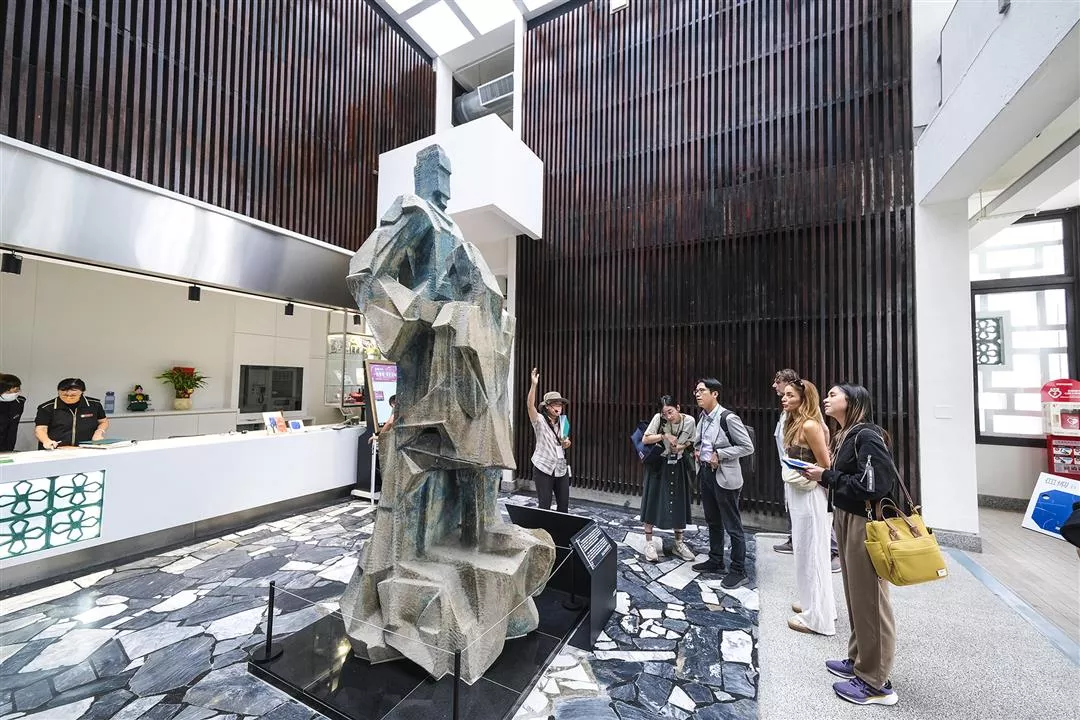
At the Tainan City Museum one can fully explore Taiwan’s rich history and cultural diversity.
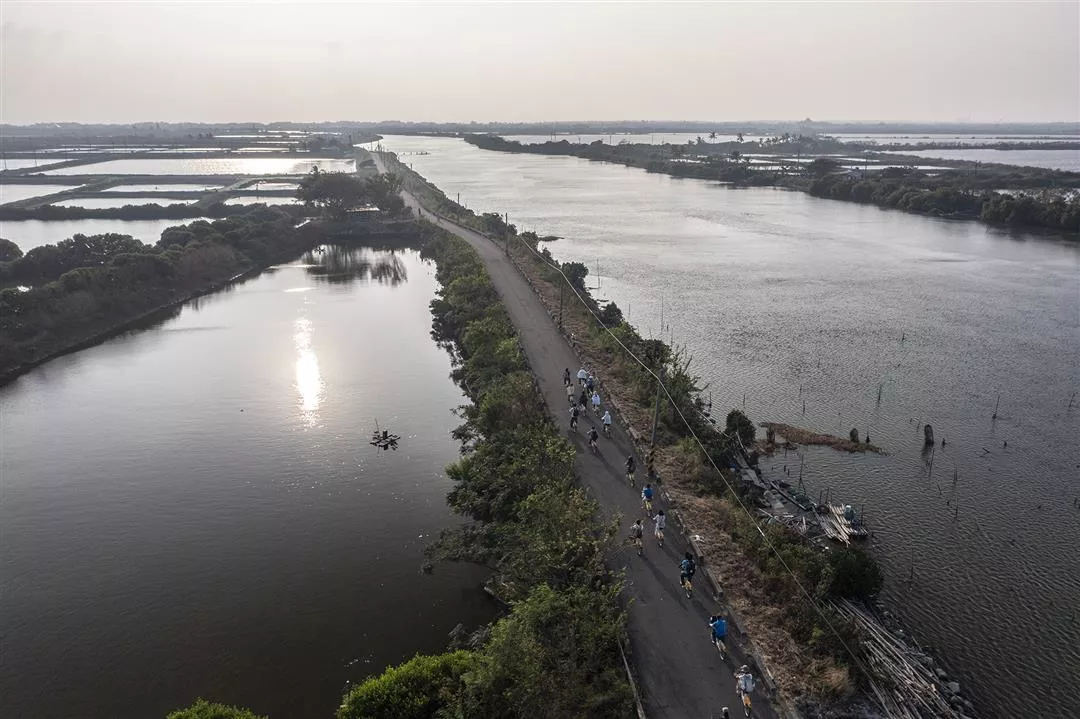
Taijiang National Park, covering an area that was once Taiwan’s largest lagoon, bears witness to the vicissitudes of history.
The Taijiang Inland Sea
The itinerary for Day 2 of our suggested visit to Tainan begins at the Taikang (Taijiang) Cultural Center. During the era of Qing rule in Taiwan, the Taijiang Inland Sea was the island’s largest lagoon. It was also the place where immigrant farmers from China came ashore during the Ming and Qing dynasties. From the cultural center one can ride a bicycle to the Sicao Green Tunnel and take a raft tour of the wetlands there, featuring oyster racks, wild birds including egrets and black-crowned night herons, and mangrove ecology.
Next, visitors can take in the National Museum of Taiwan History, which is located where the great bay of the Taijiang Inland Sea could be found 400 years ago, to get a microcosmic understanding of Taiwan’s past. Then comes the Museum of Archaeology (the Tainan Branch of the National Museum of Prehistory). Here one can see how the great bay transitioned into dry land during that period of remarkable change.
The former Taijiang Inland Sea is also the starting point of the Mountains to Sea National Greenway. Tao Chun-chen, project secretary of the Taiwan Thousand Miles Trail Association, notes that this greenway climbs from sea level to the summit of Yushan (Mt. Jade), Taiwan’s tallest peak at 3,952 meters, which is located at the intersection of Chiayi County, Nantou County, and Kaohsiung City. Its scenery is very attractive to foreign tourists.
The Mountains to Sea National Greenway also appeals to aficionados of culture and history. In particular, the section from Chaohuang Temple to the Museum of Archaeology, known as the Inland Sea Trail, testifies to the vicissitudes of time.
Tao mentions that in the course of interactions with international trail associations, including those from Canada and Korea, he noticed that foreigners understand Taiwan’s situation increasingly well and are showing a rising interest in Taiwan’s history. Learning about Taiwan’s history through the perspective of the greenway can be a valuable route to understanding Taiwan.
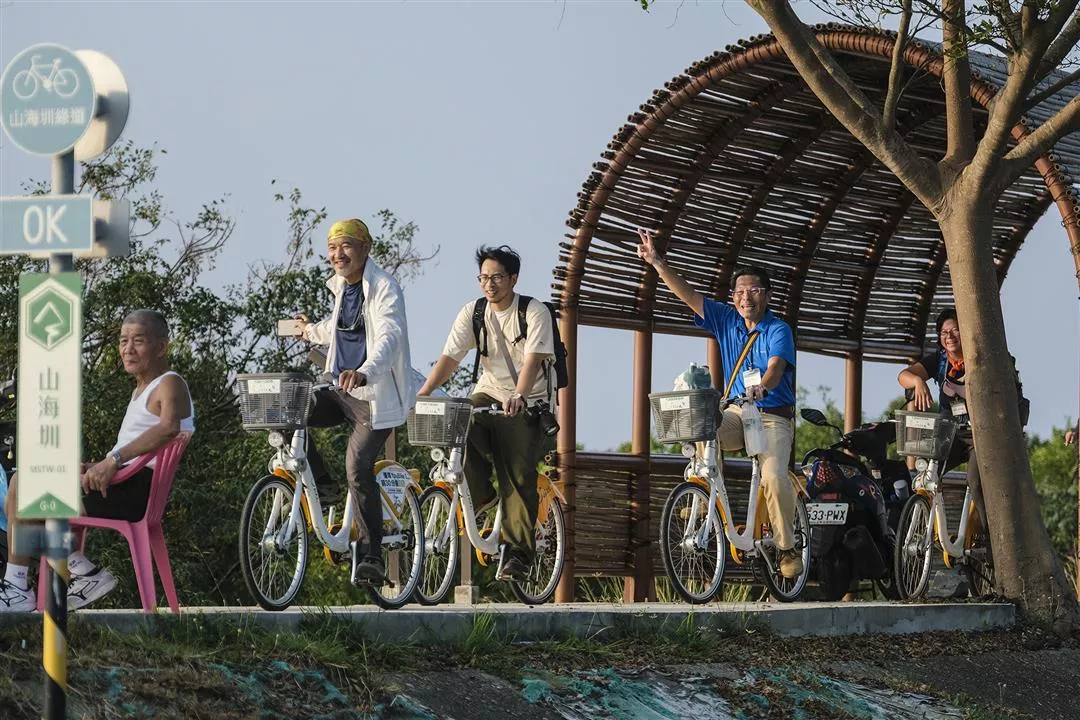
From the 0 kilometer marker of the Mountains to Sea National Greenway, visitors can take the first step on a journey through Taiwan’s beautiful scenery and fascinating culture.
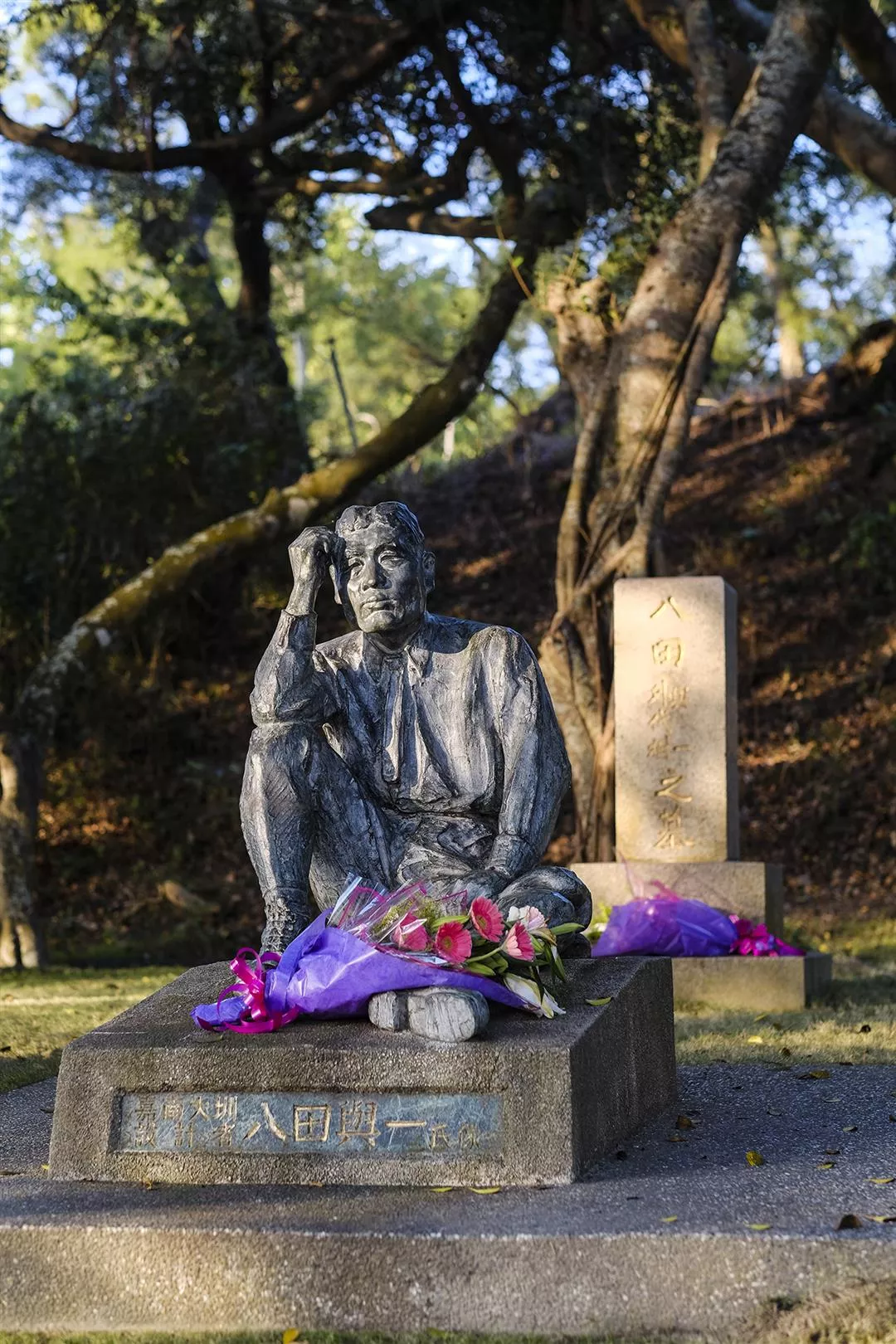
Irrigation pioneer Yoichi Hatta, whose statue stands near Wushantou Reservoir, is venerated by local farmers as a guardian deity of the land, showing the mindset of repaying benefactors with gratitude that is an important element of Taiwanese social interactions.
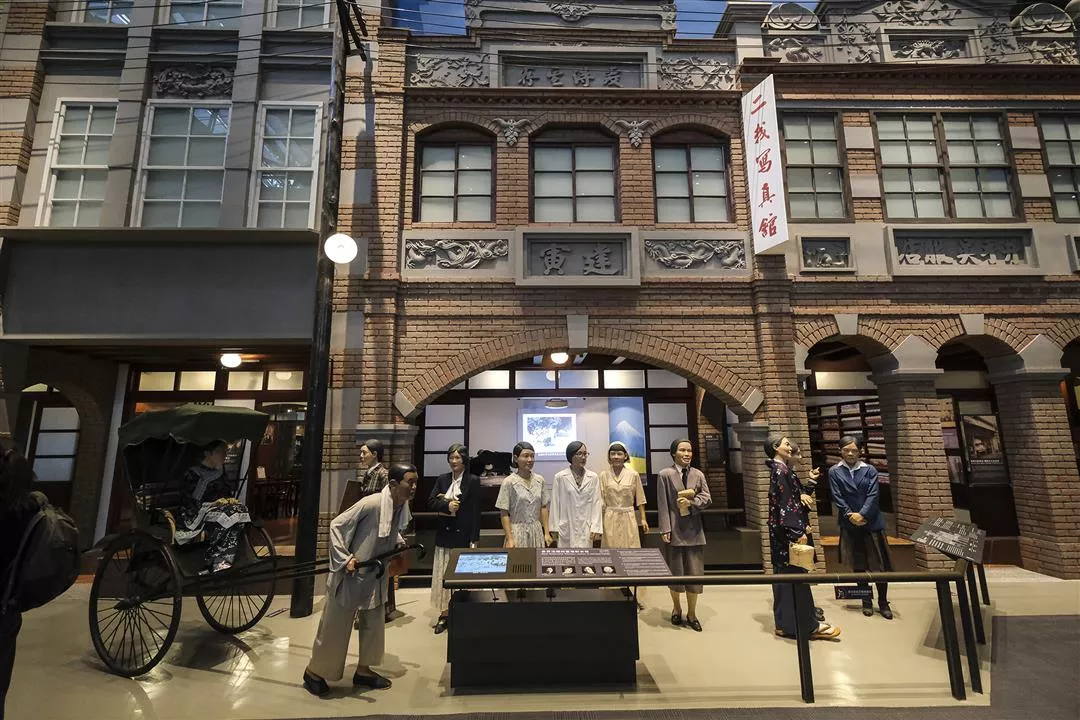
Four centuries ago, the site of the National Museum of Taiwan History was part of a huge lagoon bay. Standing in this historic location, the museum has the mission of preserving and communicating the stories of Taiwan’s past.
The highest train station
The Mountains to Sea National Greenway is 177 kilometers long. The well-known Japanese long-distance hiker Masafumi Saito walked the entire route, sleeping in churches and on school playgrounds and getting a deep sense of the great warmth and hospitality of Taiwanese people.
The entire greenway can take more than ten days to complete. Tao Chun-chen suggests that if someone is unable to walk the whole trail, they can choose to skip sections of the route and shorten their journey by combining hiking with vehicular travel. For example, one can ride the Alishan Forest Railway up to Alishan and then walk down via the greenway, passing the Tsou indigenous communities of Tfuya (Chinese name: Tefuya) and Tapangu (Dabang) along the way. Foreigners are generally fascinated by the traditional Tsou custom of indoor burial and admire the gorgeous and brightly colored aesthetics of the tribe, thereby getting a taste of Taiwan’s fundamental cultural diversity. From Tapangu, or from the Tsou community of Niae’ucna (Lijia) further along the trail, visitors can proceed by vehicle to Chiayi’s Dapu Township to see the Zengwen Reservoir, or to Tainan’s Liujia District to visit the Yoichi Hatta Memorial Park and the Wushantou Reservoir.
While riding the Alishan Forest Railway, along the way one can stop at the Shizhuo tea farming area to try Alishan high mountain tea and tea snacks, or one can eat a boxed railway meal at Fenqihu Station. Zhushan Station, the line’s terminus, is Taiwan’s highest-elevation train station. If staying overnight in Alishan one can get up early to admire the famous sunrise and “sea of clouds,” and wander in the mountain forest.

The Alishan Forest Railway, which starts at Chiayi Station at only 30 meters above sea level, carries passengers into the beauty of the mountain forests.

Sampling tea at Shizhuo on Alishan, one gets a profound sense of Taiwan’s longstanding tea culture.

Anna-Maria Bonfiglio, an Internet celebrity from Austria, is a pescetarian, so she didn’t eat the meat in the railroad boxed meals, but she still was very complimentary about their stir-fried cabbage.
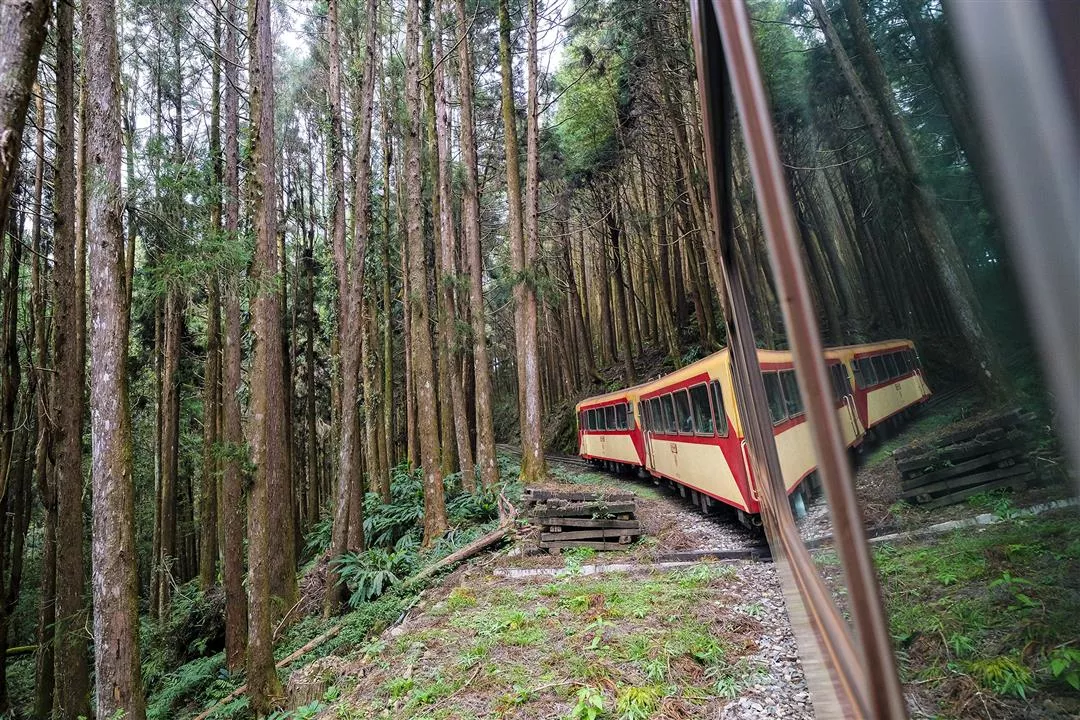
The Alishan Forest Railway climbs to an altitude of 2,216 meters above sea level and gives riders a chance to experience “forest bathing.”
Strolling next to mountains and sea
In 2024 EVA Airways Corporation organized a special event for social media personalities from a number of European countries including Austria and Switzerland. The airline invited them to come to Taiwan to take part in EVA Air Marathon activities in Taipei, after which they traveled south by high-speed rail to hike various segments of the Mountains to Sea National Greenway. The goal was to recommend Taiwan’s mountain forests to Europeans who love hiking.
Angela Tsai, a sales and marketing staffer at EVA Airways’ Austrian branch, observed that the alpine nation of Austria has much in common with the likewise small and mountainous country of Taiwan. In particular, citizens of both nations enjoying using their free time to go hiking in the highlands.
With many direct flights currently available between Europe and Taiwan, traveling to Taiwan has never been easier.
Internet celebrity Anna-Maria Bonfiglio of Austria was especially impressed by the fact that one can go from admiring the sun setting over the Taiwan Strait from the Sunset Platform in Tainan’s Anping District to soaking in a hot spring in the mountains the same evening. After trying all manner of foods, she most strongly recommended night-market scallion pancakes and sweet potato balls. However, and perhaps inevitably, she found that “stinky tofu is too stinky,” and politely declined to eat any more after trying a bite.
Peter Agathakis, an Austrian radio broadcaster, travel journalist and podcaster with a career spanning 25 years, has visited more than 150 countries for his travel programs. On this trip, his third to Taiwan, he said that the mountain scenery to be seen on Alishan was comparable in beauty to the Swiss Alps or the Peruvian Andes.
Agathakis especially recommended that visitors to Taiwan try the curry version of Chiayi turkey meat over rice, Fenqihu’s chilled tofu dipped in wasabi, or the Tainan specialty of milkfish fins with pickled watermelon. His choice of dishes marks him out as a discerning traveler.

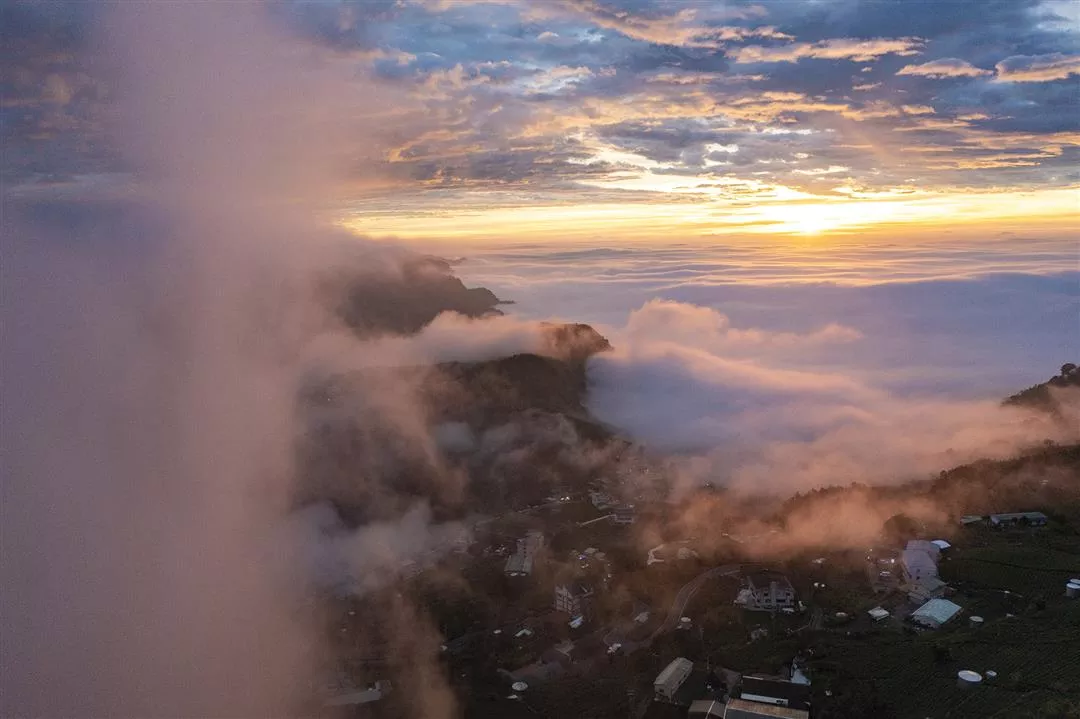
Gazing out over mountain peaks amid a sea of clouds is one of the most gorgeous sights to be seen in Taiwan.
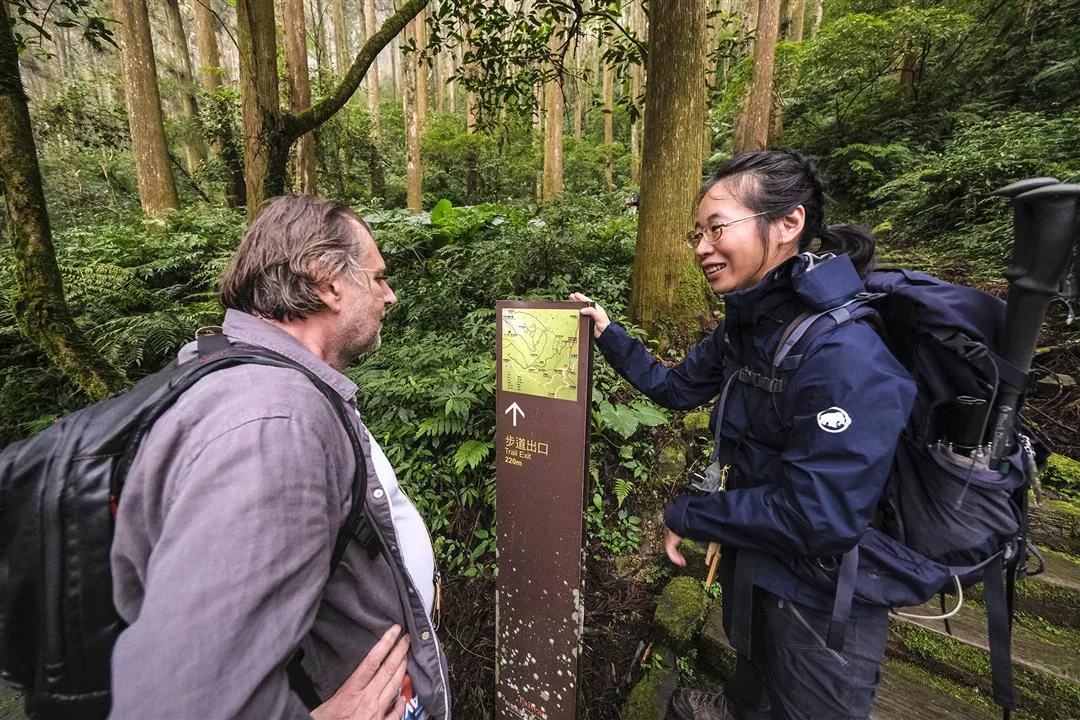
Peter Agathakis, who hosts a travel program in Austria, says that the scenery of Alishan is comparable in beauty to that of the Swiss Alps and the Peruvian Andes.
Climbing high to see the sights
When visiting Alishan, one can choose to hike the Tefuye Ancient Trail, which is suitable for all comers, or head upwards to conquer Northeast Asia’s highest peak, Yushan.
Wu Tingyeh, senior manager of activities at Wildman International Travel & Tours, remarks that many foreign visitors who enjoy mountain hiking or climbing specifically indicate that they want to climb the famous Yushan. However, before trying this it is best to undertake fitness training and have experience climbing mountains at least 2,000 meters high, in order to avoid altitude sickness.
Wu says that when the weather is good, one can see Yushan Main Peak from the West Peak Lookout. The stretch of trail that leads from the Tataka Trailhead to Paiyun Lodge is the same route as Japanese naturalist Tadao Kano followed when he climbed Yushan 100 years ago, a story that especially resonates with Japanese travelers. When this hike is paired with hot springs bathing at Dongpu, one can really experience the same delight that Kano felt in Taiwan’s mountains.
Wu also recommends Taiwan’s second highest alpine lake, Jiaming Lake in Taitung, to foreign visitors. He believes that they will prefer this lake, at 3,310 meters above sea level, to the island’s highest such body of water, Cuichi (Cui Pond or Emerald Pond), located on Xueshan. The main reasons he cites are that Jiaming Lake is easier to reach, has better mountain hut accommodations, and offers extensive views of exquisite scenery including mountain ridgelines and a sea of clouds.
Whether taking a one-day walk or embarking on a long-distance trek, every traveler who comes to Taiwan can find a beautiful starting point and enjoy views of blue skies, white clouds, and mountain peaks. Our suggested itinerary is only one way to go, albeit an especially lovely one!
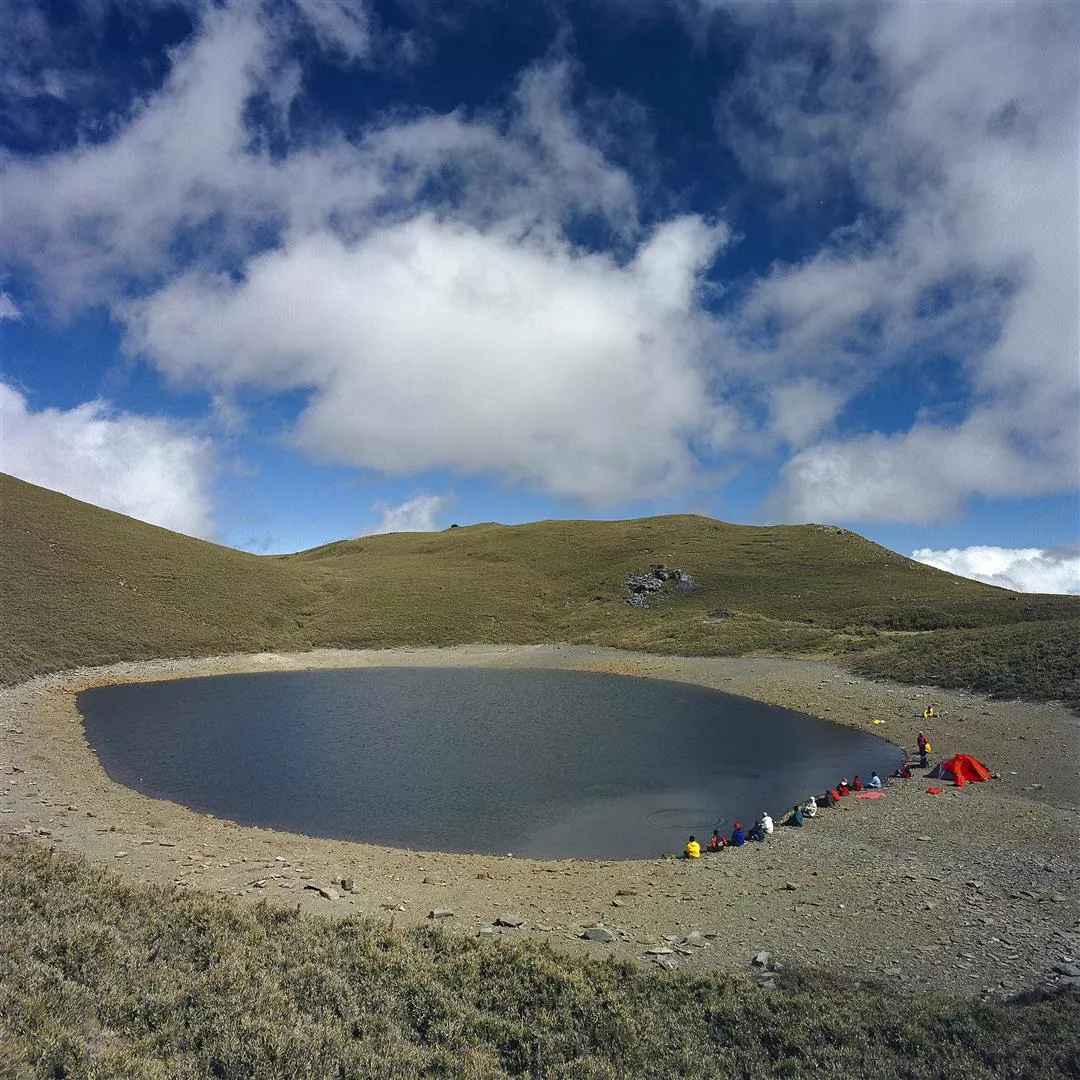
The fantastic scenery at Jiaming Lake should be on the must-see lists of foreign mountain hikers. (MOFA file photo)
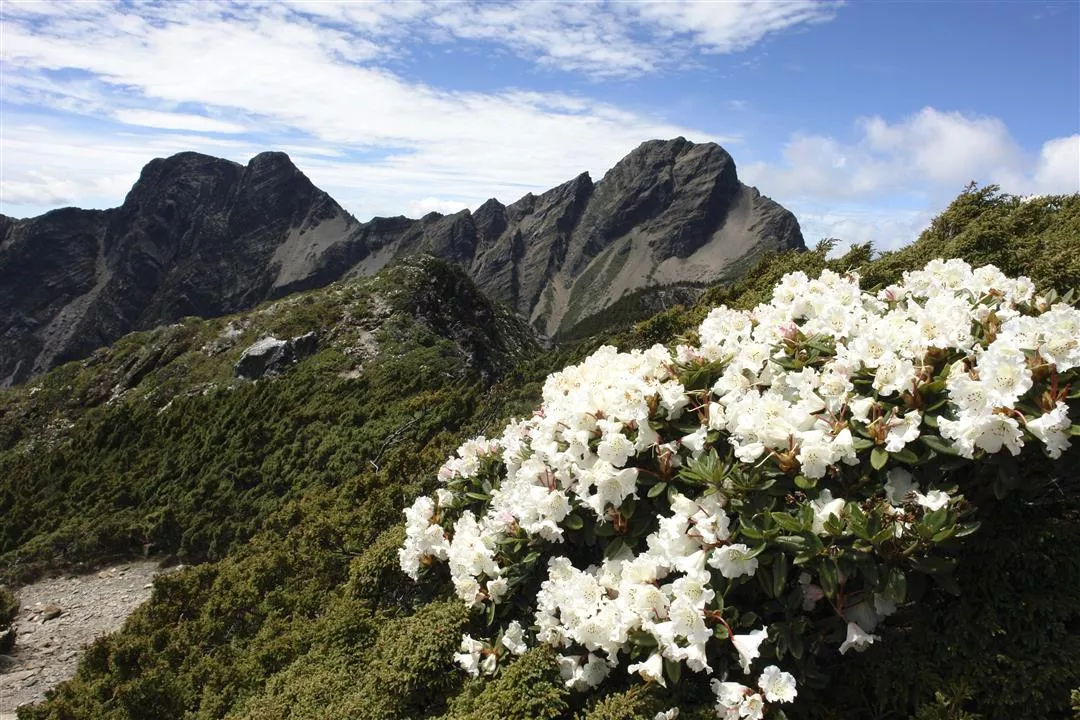
When climbing Yushan one can encounter many endemic plant species. The photo shows the Yushan rhododendron (Rhododendron pseudochrysanthum). (photo by Fang You-shuei, courtesy of Yushan National Park)

@List.jpg?w=522&h=410&mode=crop&format=webp&quality=80)
-1@List.jpg?w=522&h=410&mode=crop&format=webp&quality=80)




